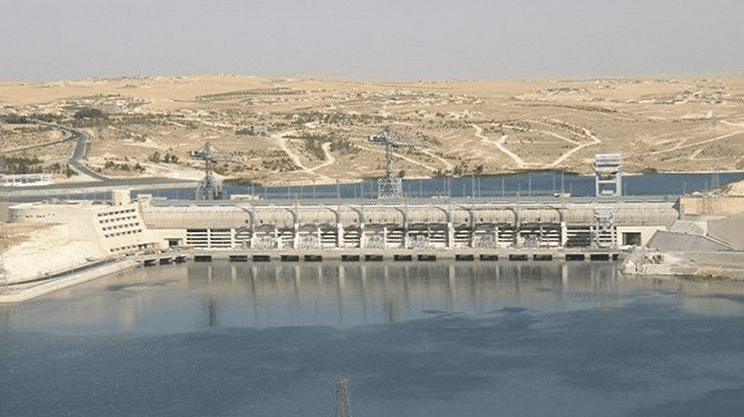Former Tabqa Dam engineer: ‘We could see an immediate humanitarian crisis of historic proportions’
Islamic State fighters opened three turbines of Syria’s largest dam […]
26 January 2017
Islamic State fighters opened three turbines of Syria’s largest dam in central Raqqa province Monday, causing record floods in downstream rural Deir a-Zor and raising fears of a humanitarian crisis should the dam ever collapse or burst. It is not an inconceivable notion given the current frontline between the Islamic State and the Kurdish-majority Syrian Democratic Forces just two kilometers away.
It was unclear on Thursday whether the turbines were still open.
SDF forces hope to cross the Euphrates along the dam and seize the adjacent IS-held city of Tabqa, a key point along the road to Raqqa, 40km to the east, a Kurdish commander told Syria Direct last week.
Ground fighting and US-led coalition airstrikes have already reportedly hit the dam’s entrance in recent days. But any military strike on the structure could likely cause “an immediate humanitarian crisis of historic proportions in all areas downstream from the Tabqa Dam,” civil engineer Abdullah Juwwad Sukran, who used to work at the dam, tells Syria Direct’s Mohammad Abdulssattar Ibrahim.

Abdullah Juwwad Sukran is the former head engineer of the Tabqa Dam, now living in Turkey. He left his work and Syria in March 2013.
Q: How did the Islamic State open the floodgates? How is this affecting residents in areas along the length of the Euphrates River? How many floodgates are there?
The Tabqa Dam’s hydroelectric power station is built on the southern bank of the Euphrates River and features eight floodgates on its upper section.
Each floodgate is capable of releasing 1,800 cubic meters of water per second from the lake when opened at its widest. When opened at its smallest, it can release 300 cubic meters of water per second.
IS has already opened three of the floodgates. If they open the smaller gates, which are usually used to drain excess water from the lake, it would release at least 900 cubic meters of water flow per second. If they add the water flowing from the turbines, this adds at least another 200 cubic meters per second. The total water flow of 1,100 cubic meters per second can cause slight damage to land downstream from the dam.
However, according to my information, the water flow has now increased to 2,500 cubic meters per sec, and this constitutes a flood danger for a large area of land downstream from the dam, reaching Raqqa city. It’s possible that if there is a flood, it could submerge some neighborhoods of Raqqa city, and even the main square, within an hour.
Q: How do you expect the humanitarian situation in Deir a-Zor, in the areas surrounding the dam, to pan out if the water continues to rise? What are the short-term and long-term effects of this kind of flooding?
Currently, there isn’t a huge danger to the cities of Raqqa and Deir a-Zor. The risk of floods is mostly limited to the farmlands on either side of the river.
However, if the dam collapses, or if water continues pouring out at the rate it is currently, we could see an immediate humanitarian crisis of historic proportions in all areas downstream from the Tabqa Dam.
The Islamic State’s justification for opening the turbines is that they are relieving pressure on the lake to prevent a collapse. However, I think it is more likely that a military strike, rather than a technical failure, would cause flooding.
In order to address the dangerous situation at Tabqa Dam, it is my hope that all sides involved in fighting in the area observe the following guidelines:
- Do not fire weapons at the hydroelectric station.
- Do not target the floodgates or the framework that functions to raise and lower them.
- Do not fire heavy weapons at the body of the dam in any form.
- Keep the staff operating the station, and prevent it from going out of service—if it goes out of service for just three hours, this will lead to a catastrophe that is impossible to stop.
Q: Do you know who operates the dam currently? Who is providing the technicians and engineers?
Most of the engineers and technicians working in the dam are Syrians, but the administration of the dam is run by IS. Of course, the best engineers and technicians have left, and I think those remaining don’t have enough expertise to keep the dam running in the long term.







